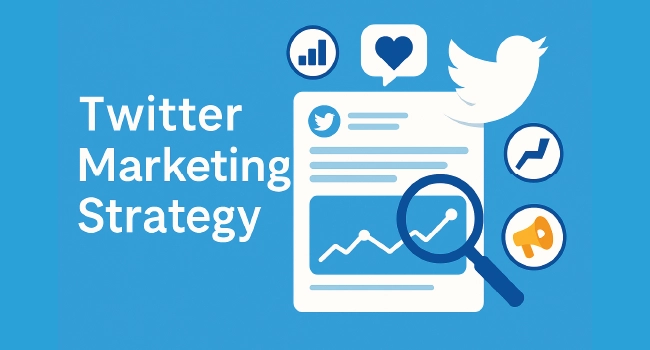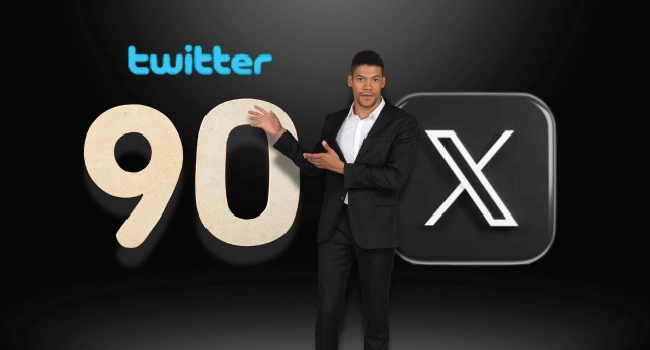
A solid Twitter marketing strategy starts with understanding how people actually use the platform. X is a fast-moving feed where attention is earned in seconds, and the posts that gain early engagement spread the furthest.
That means your strategy should mix smart timing, clear messaging, and formats that invite replies, retweets, or clicks.
Think of it less as broadcasting and more as starting small sparks that can grow into bigger conversations. In this guide, I’ll share practical steps and examples you can use to create a strategy that feels natural, builds trust, and delivers results.
How the Feed Shapes Your Twitter Marketing Strategy
The feed on X works like a constant recommendation engine. Posts that spark quick engagement, likes, retweets, replies, or even dwell time get pushed to more timelines.
The opposite is also true: content that doesn't gain traction early tends to disappear fast. That's why your Twitter marketing strategy should focus on building momentum in the first moments after you post.
You can encourage this by:
-
Asking a direct question that invites replies.
-
Using short, clear hooks that make people stop scrolling.
-
Pairing text with visuals, images, GIFs, or short videos keep attention longer.
-
Replying to your own threadto extend dwell time.
Early engagement is the key that tells the algorithm your post is worth showing to more people. And here's where you have an edge: if you're just starting out or want to amplify a campaign, you don't need to wait for organic traction alone. You can give your content an instant push with our Buy Twitter Retweets service.
By adding real retweets right after you publish, your post gains that initial spark the algorithm looks for. The more activity it sees early, the further your message can travel, reaching new eyes, building credibility, and setting you apart from accounts that rely on luck.
The best part? You get fast delivery, no bots, and affordable packages, so you can focus on creating content while we help boost its visibility.
Choosing the Right Formats for Your Twitter Marketing Strategy

The format you choose on X can completely change how your audience reacts. Some people respond to a punchy text-only post, while others stop scrolling when they see a strong visual.
A smart Twitter marketing strategy blends different formats so your content feels fresh and reaches people in multiple ways.
-
Short text posts: Quick takes, jokes, or questions that spark replies.
-
Images and GIFs: Visuals draw the eye and add personality to your message.
-
Video clips: Short, vertical videos get high watch time and fit right into the feed.
-
Threads: Perfect for breaking down a story or guide step by step.
-
Articles (Premium+): When you want long-form depth with links, images, and headers.
Timing also matters. Posting when your audience is most active increases your odds of gaining traction right away. Many brands experiment with scheduling tools to test the best time to post on Twitter, then double down on the windows that deliver the strongest results.
Conclusion
A solid Twitter marketing strategy is the foundation for lasting growth on X. When you approach the platform with clarity, each post and campaign serves a purpose.
Think about it as a journey. The early stages are about testing different formats and discovering what sparks conversation. As you gather insights, you can refine your content and ads so they align more closely with what people want to see.
The more consistent you are, the more your brand becomes part of the daily scroll. Every tweet, video, or thread can work like a stepping stone, guiding people toward deeper engagement and loyalty.
FAQs | Frequently Asked Questions |
How do hashtags help on Twitter?
Hashtags act like labels that group posts into larger conversations. Using a few relevant ones can make your content easier to find and connect you with audiences already interested in the topic.
What role do polls play in marketing on X?
Polls are a quick way to boost interaction. They invite followers to engage with a single click and give you feedback that can shape your content or campaigns.
Can collaborations with other accounts improve results?
Yes. Partnering with creators or brands expands your reach. A joint thread, event, or campaign exposes you to audiences who might not have found you otherwise.
How can you balance promotion with value on X?
The best approach is to mix helpful or entertaining posts with occasional promotional content. When people feel they’re gaining value, they’re more receptive to brand messages.


